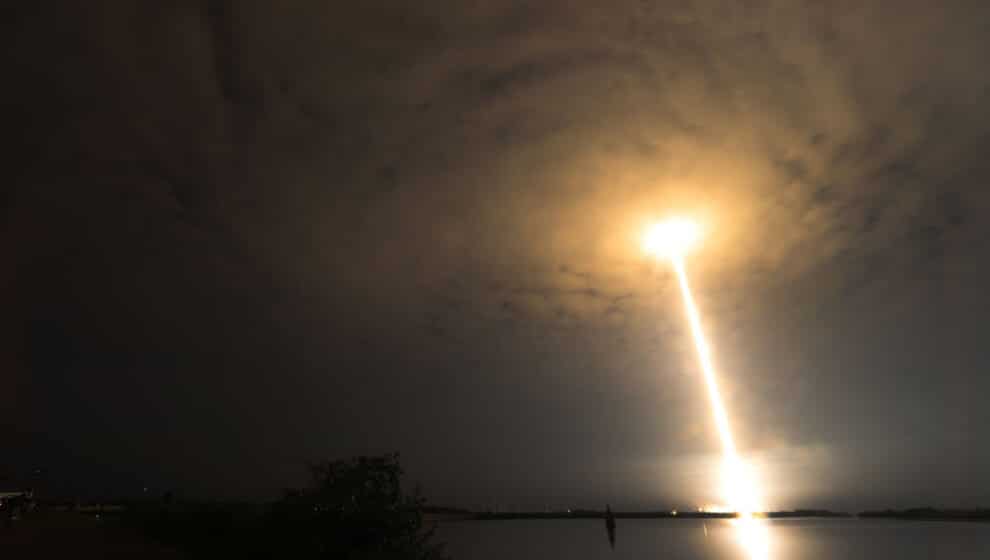Private enterprise is set to define the commercial ambitions of space as NASA falls behind.
Key Details
- The recent scrubbed launch of NASA’s Artemis I has sparked renewed discussion about the viability of space travel as a commercial venture.
- The rocket’s delays and expensive design have raised questions from a NASA auditor about the rocket’s viability as a launch vehicle in the near future as private space companies surpass NASA’s work.
- As we previously reported, NASA’s Artemis I moon rocket had two launch attempts scrubbed on August 29 and September 3 following engine leaks. Its next available launch window is September 23.
- The government’s space administration is facing fierce competition from private space companies like SpaceX, Blue Origin, Rocket Lab, Bigelow Aerospace, and Virgin Galactic, which are outpacing the scientific development of the government and embracing more challenging ambitions like space tourism and Mars colonization.
- There is still a long way to go for private space though. Jeff Bezo’s Blue Origin faced its first major failure today with one of its New Shepard rockets crashing shortly after takeoff. Nobody was aboard.
Why it’s important
These approaches to space travel and investment raise questions about the viability of space travel as a commercial enterprise. They create concerns about what the ultimate goal of space travel should be and just how expensive it’s going to be to get there, especially on the taxpayer’s money.
NASA and Space X’s programs reflect philosophical differences in both sides’ approaches to space travel, with the moon being seen as a commercial vehicle for mining rare earth elements and an ideal place for a communications hub.
SpaceX founder Elon Musk has larger ambitions of turning Mars into a habitable world through terraforming and mining operations, serving as a new frontier for human exploration and habitation.
“Settling Mars would at the very least provide humanity with an effective backup plan in the event of a global catastrophe, such as a pandemic worse than Covid or a nuclear war. It could preserve the light of consciousness, as Elon Musk likes to put it. In addition, Mars enthusiasts argue, future generations would benefit from being able to tackle the same kind of rejuvenating challenges that early American pioneers faced as they headed West,” says Spectator World.
Backing up a bit
In the short term though, both programs are facing the challenges of transporting large amounts of man-made materials to space, before attempts to land on the moon or Mars are possible.
Boeing’s Space Launch System is a non-reusable rocket that costs $4.1 billion to launch and is not mass-producible, an increase from $1.6 billion for a space shuttle launch.
Space X’s Falcon 9 rocket has been successfully launched 175 times in the past 12 years and costs $67 million per launch. SpaceX’s upcoming Starship program is expected to further eclipse Artemis, being fully reusable and able to carry super heavy loads into low orbit.
“Those who support the Artemis program readily concede that SpaceX’s more powerful and economical Super Heavy booster could render NASA’s more traditional SLS rocket obsolete the moment Starship becomes operational,” says Spectator World.
The cost has made Artemis unpopular with lawmakers and controversial among commentators and journalists, and further delays may push the projected Artemis III moon-landing beyond 2026.
NASA auditor Paul Martin already told congress in March that Artemis would cost double what it was projected to cost due in part to delays, cost overrun, and inflation. He says $40 billion has already been spent and an estimated $93 billion in spending is expected through 2025.
“NASA has built a monstrously expensive, obsolete rocket at the behest of Congress seemingly to appease the people who decide the space agency’s funding. The Orion/SLS represents jobs for constituents and fat contracts for campaign contributors,” says space journalist Mark R. Whittington.
The crash of one of Jeff Bezo’s Blue Origin rockets this afternoon though shows that private space still has issues to work out. All of the company’s rockets were grounded today pending a federal investigation into the crash of the unmanned rocket, which has previously been used to transport 31 people on short flights including Bezos and actor William Shatner.
“A rocket crashed back to Earth shortly after liftoff Monday in the first launch accident for Jeff Bezos’ space travel company, but the capsule carrying experiments managed to parachute to safety,” says AP.
Notable quote
“Companies that once had to pay hundreds of thousands of dollars to put a satellite into orbit can now do the same for a fraction of that price. Smaller satellites and lower launch costs mean startups and students can sometimes launch projects for just a few thousand dollars,” says NBC News.
